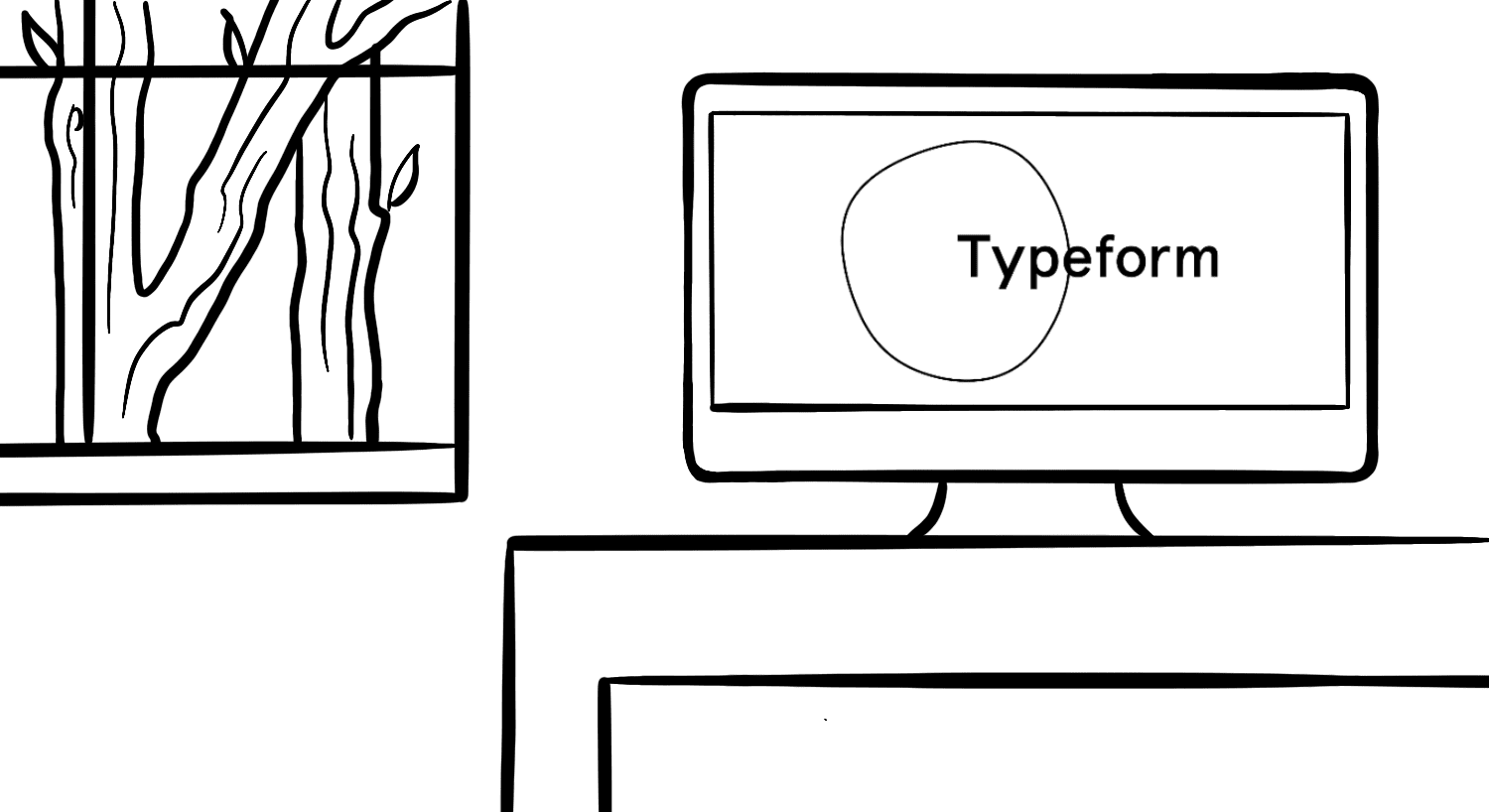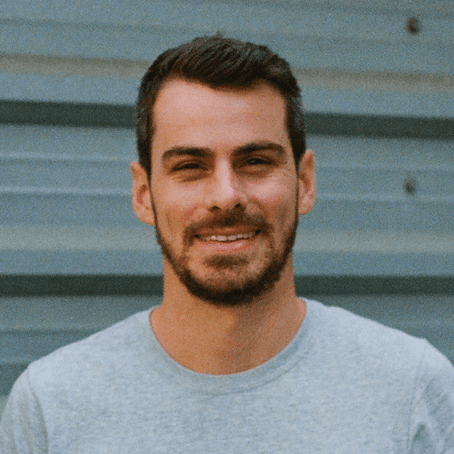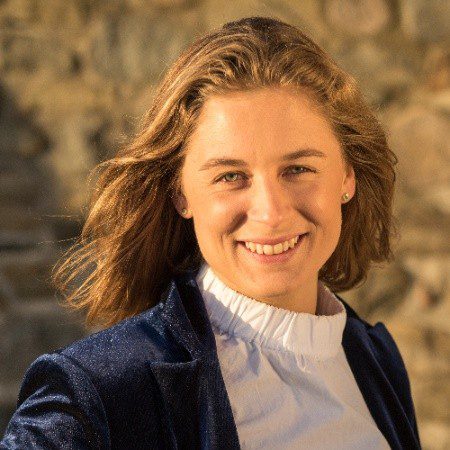How Typeform works with people with disabilities to improve form accessibility
Typeform already conducted accessibility testing. Then they realized that to understand whether their product experience was usable, they would have to involve people with disabilities during the product development process. Using Fable, they were able to speak directly with assistive technology users.

“We don’t think that accessibility is more important than anything else. But it is just as important as anything else.”

Yuri Martins
Senior Product Designer at Typeform
“We don’t think that accessibility is more important than anything else. But it is just as important as anything else.”

Yuri Martins
Senior Product Designer at Typeform
Creating forms that everyone likes to answer
Typeform is an online software as a service company that specializes in online form building and online surveys. Its main software creates dynamic forms based on user needs. Typeform is a team of over 300 people from more than 35 countries, with offices in Barcelona, Spain and San Francisco, US.
From its beginnings, Typeform has put a major focus on user experience. In fact, the poor experience of internet forms was the main reason behind its inception. Typeform invests heavily in user research and product design to continue building a good product experience.
Although recently they realized that there is more they want to do to ensure their product has a great user experience for everyone – including people with disabilities – not simply one compliant to accessibility guidelines.
Building an accessibility initiative
In 2019, Typeform’s engineering team began to focus more on accessibility. They created an accessibility initiative with the goal of producing more accessible code.
When most organizations think of accessibility, they typically think of guidelines and checklists. For example, “what are all the things that we need to do to become compliant”? The natural place is typically to comply with WCAG, at this point, the 2.1 iteration.
During an accessibility audit, the Typeform team learned there were many issues to reach this goal of compliance. Further, they received some customer frustration on social media about a lack of accessibility, and they did what they could to fix the issues raised.
In 2020, they decided to make even more wide-ranging changes. With new leadership and an aligned focus from across departments, accessibility became a priority for both design and engineering on the respondent experience.
Moving beyond compliance to usability
Olga Hörding is a Principal User Researcher at Typeform, where she conducts research about users to better understand their behaviors as well as inform product and design decisions.
On accessibility, she works with product design, product, and engineering to incorporate user research into Typeform’s accessibility initiative.
Beyond user research, accessibility also has implications on overall product design. A Senior Product Designer, Yuri Martins, designs the experience for both Typeform creators and respondents, which involves collaborating with researchers, product managers, and engineers to understand where their customers’ needs meet the company goals.
Yuri works with researchers, product designers, product managers, and engineers to make sure Typeform’s respondent experience is accessible, and to understand how their organization can better incorporate accessibility into the company’s workflow.
“It took some time to understand how user research could bring value to our ongoing accessibility efforts. Our team was already running accessibility testing – during development and in final reviews, with the support of a third party. By getting deeper into the topic, we understood that an experience can be accessible, but that doesn’t necessarily mean it’s usable.” said Olga.
As Olga and Yuri considered the kind of work that they wanted to do on accessibility, they asked themselves “are we only going to meet the requirements… or are we going to try to build a usable experience?”
So, they shifted to looking for a partner that could help them make Typeform more accessible and usable for people with disabilities and assistive technology users.
“We realized that to understand if an experience is usable, we would need to involve people with disabilities throughout the product development process – something we were not doing at that point. This made us start looking for partners to help us do it.”

Olga Hörding
User Researcher at Typeform
“We realized that to understand if an experience is usable, we would need to involve people with disabilities throughout the product development process – something we were not doing at that point. This made us start looking for partners to help us do it.”

Olga Hörding
User Researcher at Typeform
Finding a partner for engaging with people with disabilities
In Typeform’s case, it was an unexpected outreach that helped prompt them to engage with people with disabilities. “I had a former colleague reach out curious about the kind of work we were doing on accessibility. They were wondering about what we were doing at Typeform, as a design and research department, to advance on accessibility,” said Olga.
And while Olga could speak about a range of accessibility work, it was this prompt that made her realize that she really “needed to talk to users to test our progress.”
“We also had a blind user state on a blog post that Typeform is not accessible. But he positioned it as an offer ‘how can I help?’”, said Yuri. “We took that as an opportunity.”
Once Olga and Yuri spoke with their team internally, they became even more interested to work with assistive technology users in building a more accessible Typeform experience.
“Although, we realized that this user who reached out only used one kind of assistive technology. If we really wanted to test, we needed to test with a broader audience and array of assistive technologies.”
“When we did vendor exploration, we looked at a few options, and landed at Fable. What really caught our eye was the level of education offered. We liked that Fable was available for a long-term partnership, that integrated with our research and product development cycle. Fable felt like it could fit into our agile framework.”

Olga Hörding
User Researcher at Typeform
“When we did vendor exploration, we looked at a few options, and landed at Fable. What really caught our eye was the level of education offered. We liked that Fable was available for a long-term partnership, that integrated with our research and product development cycle. Fable felt like it could fit into our agile framework.”

Olga Hörding
User Researcher at Typeform
Life before Fable
Implementing an accessibility workflow can be quite challenging without the right partner.
As a software company, Typeform operates with short release and improvement cycles, trying to bring value to their users as quickly as possible. This means that any process they add must be able to work on short cycles.
“Before Fable we weren’t able to get feedback quickly from assistive technology users and made accessibility improvements move slower than what we wanted.” Further, Typeform also “did not have a process in place where we would discover an accessibility issue and then feed it into our development cycle. Initially, we did an accessibility compliance review with a third party, where the team got a list of issues back that they worked on to reach compliance.”
More than speed, Typeform also struggled to include thoughts directly from assistive technology users. “Before Fable we weren’t able to talk directly to assistive technology users and see people with disabilities using and interacting with a Typeform. Previously, this brought some challenges for us, as a lot of times we weren’t able to really understand what the issue was and how we could improve it.”
Recognizing these challenges, Olga and Yuri worked to get buy-in from their team for Fable – and created a business case to summarize why it mattered. “We began pointing to why this is important to us as a business, and how we would approach it, as well as raising the challenges we had ahead of us,” said, Yuri.
“With Fable’s interviews and self-guided tasks, we now can have a much deeper understanding of how assistive technology users navigate forms.”

Olga Hörding
User Researcher at Typeform
“With Fable’s interviews and self-guided tasks, we now can have a much deeper understanding of how assistive technology users navigate forms.”

Olga Hörding
User Researcher at Typeform
The implementation process
In beginning their work with Fable, Olga and Yuri started with the basics. “We started with our backlog and about 15 requests on the platform,” said Olga “And we would take the results and share it directly with the two teams working on accessibility.”
Once they moved through the backlog, Typeform’s team was able to look ahead. They began conducting continuous accessibility work. “Now we work on a quarterly basis and run about 6 requests a quarter,” said Olga “so as we come up with a new feature, we review it with users.”
However, going deeper on an accessibility workflow has required coordination. “It has been an educational journey with multiple moving pieces,” said Olga. “Moving ahead, we set up multiple interviews to get a better general understanding of people’s needs. We ran multiple unmoderated testing sessions to validate the changes made to our experience to make sure it’s not just accessible but also usable. This has been followed by a bunch of work on how to smoothly incorporate the user feedback into the product development process.”
It has also been important to integrate effectively into their team’s process, ideally as early as possible. “We realized that if we want to make this work, we need to put accessibility at the beginning.” said Yuri.
Yuri remarked that “we now consider accessibility early on, while doing research and designing, and after a feature is developed, we test and get feedback from Fable. This also helps us to understand how to handle and prioritize accessibility feedback we receive from our customers.”
Typeform’s accessibility work takes place in several formats to ensure they can get the information that they need. “Sometimes we do interviews, sometimes we do compatibility tests, sometimes we do self-guided ones,” said Yuri. “Our engineers are often missing the context of what needs to be improved. Testing with Fable allows us focus on the issues that need the most attention.”
Their accessibility workflow also enables them to prioritize effectively. “Now we classify issues as major or minor. Inside the engineering team, we have a time limit to fix these issues,” said Yuri. “We do this already for issues that are not accessibility issues. But now we treat accessibility issues as normal issues. Based on the severity, they have to get fixed faster or slower.”
The prioritization of accessibility for Typeform has been critical. While some organizations will prioritize based on volume of issues, Typeform looks at accessibility based on impact on the user experience. That helps to level the playing field and move accessibility issues up the ranks more quickly.
“In the end we saw Fable as the best partner, so we would get the education we needed as well as the capabilities.”

Yuri Martins
Senior Product Designer at Typeform
“In the end we saw Fable as the best partner, so we would get the education we needed as well as the capabilities.”

Yuri Martins
Senior Product Designer at Typeform
Where they are now – and moving forward
Typeform’s collaboration with Fable has quickly enabled exciting progress on accessibility. “As of last week, most of the major accessibility issues were already fixed,” said Olga. “Now we are starting to prepare the next round of tests to make sure that they work.”
Now their team has “a great understanding of what works well and doesn’t work well in the user experience.” said Olga. “The point we are at now is ‘how are we going to start spreading this accessibility knowledge to the other teams?’”
Building accessibility at Typeform is an on-going process that is becoming more deeply integrated across the whole organization. Yuri remarked that “we want to bring design and engineering deeper into this process and conduct training with our teams. We are going to continue to advance on accessibility, working with Fable.”
